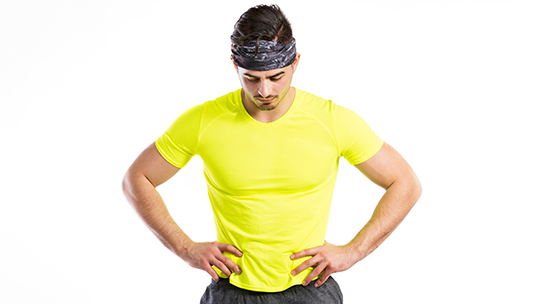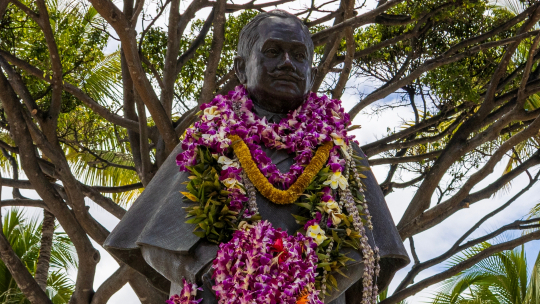A favorite worn-out T-shirt and a pair of boardshorts, locally known as “boroboro clothes,” is the average guy’s go-to outfit for yardwork or a day at the beach. But is it what you should wear to work out? Activewear has come a long way in recent decades. Advances in apparel and fashion trends have made it easier for men to ditch those hamajang threads and suit up for their favorite workout.
Need to know where to start? Let's go head to toe with a few members of Hawaii's fitness community.

Headgear
Mixed martial arts is one of the fastest-growing sports. If you’re thinking of taking up wrestling of any kind, UFC Gym Youth MMA/BJJ instructor and Personal Trainer, Darnell Gamiao, suggests ear guards to prevent cauliflower ear.
For high intensity training or running, UFC Gym Assistant Operations Manager, Rick Sakauye, uses the sleeves that he cuts off from his shirts. “Sleeves are a good fit for me because it doesn't move around and it catches my sweat,” he says.
Tops
In Hawaii, tank tops are an easy choice for workouts since they’re available year-round. You probably already have a few in your wardrobe. However, Fitness HI owner and Head Trainer, Ryan Pang, reminds us to consider gym etiquette. “The only con with wearing sleeveless [tops] in a gym would be people getting excessive sweat all over equipment, floors, and benches, so just be aware to wipe down your equipment after using the space,” he says.
Sakauye says to also consider the type of fabric. “My preferred fabric type for training would be the 60/40 cotton/poly blend because it's light, soft, and very comfortable. For running, it would be polyester because the polyester is sweat resistant,” he says.
Bottoms
Pang doesn’t recommend ever working out in pants or board shorts. “Anything that doesn’t really move or stretch well tends to have an issue of getting caught and restricting motion during the lift/ exercise,” he says.
For those who prefer compression leggings to improve blood flow, Sakauye suggests wearing them under shorts that hit above the knee.
Footwear
When it comes to running, Gamiao says moisture-wicking compression socks are important. As for weight training, Pang suggests knee-high socks, especially when lifting with a barbell. “Sometimes when you’re lifting with proper form on power cleans, deadlifts, and things like that with a straight bar, you can skin your shins, so I might consider using knee-high socks for lifts like that so that the abrasion isn’t as much of an issue and you don’t avoid crowding the bar because of the rubbing and then increase the stress on the lower back,” he says.
Unfortunately there isn’t one perfect workout shoe that does it all. Shoes are designed for a specific activity. Pang breaks it down:
“Running shoes, for instance, tend to be designed for better support moving forward, which means the lateral stability will be sacrificed, making them less ideal for cross training/ sports performance.
“Basketball shoes are designed to support the ankle for stability, so for any movement that requires more ankle mobility, these shoes would be a poor choice. [Trail running shoes], while great for feedback to the feet, leave you with less support and cushion, which means the feet and legs won’t be able to take as much of a pounding, a good thing and a bad thing depending on what you’re trying to accomplish. Lifting shoes tend to have a heel lift but wouldn’t be good for doing more athletic agility-type things.”




